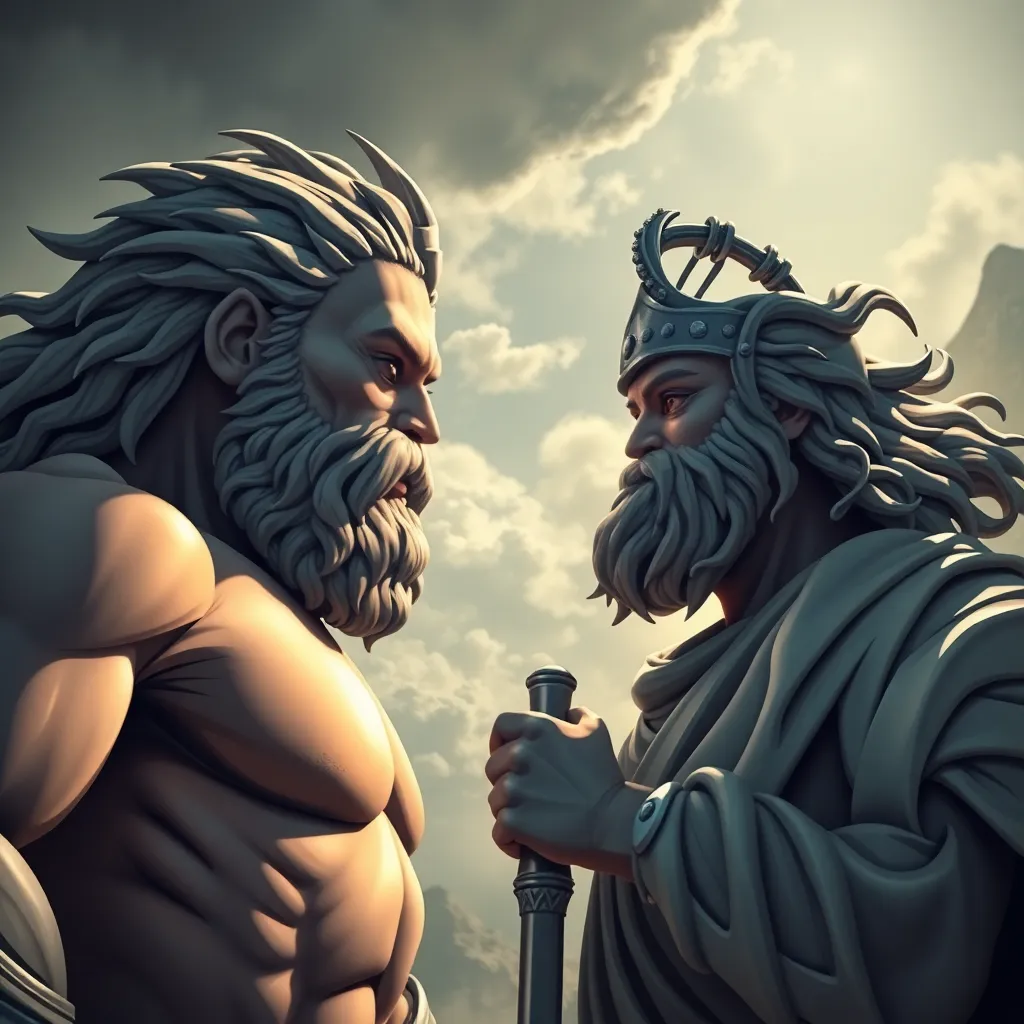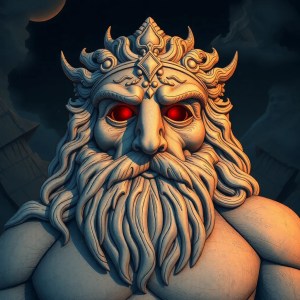Cyclops and the Hero: A Clash of Strength and Wit
I. Introduction
The Cyclops, a one-eyed giant from Greek mythology, represents the raw power and untamed forces of nature. These formidable beings are often depicted as brutish and monstrous, embodying the chaotic elements of the world. In contrast, the hero archetype embodies cleverness, bravery, and resilience in the face of adversity. The interplay between Cyclopes and heroes highlights the tension between brute force and intelligence, a dynamic that resonates through mythological narratives.
II. The Cyclops: A Symbol of Raw Power
Cyclopes are characterized by their immense size, strength, and singular eye, which sets them apart from other creatures in mythology. They are often portrayed as fierce and violent, living in isolation away from civilization. The most famous Cyclops in mythology, Polyphemus, is a prime example of this archetype.
- Characteristics and Traits of the Cyclops:
- Gigantic stature
- Single eye located in the center of their forehead
- Primitive and often brutal behavior
- Skilled in crafting and forging
- Famous Cyclopes in Mythology:
- Polyphemus: The most notable Cyclops, encountered by Odysseus in Homer’s “Odyssey.”
- The Cyclopes of Hesiod: A group of three brothers—Brontes, Steropes, and Arges—who forged Zeus’s thunderbolts.
- The Role of the Cyclops: Cyclopes symbolize the terrifying aspects of nature and the struggle of humanity to conquer or coexist with these primal forces.
III. The Hero: The Embodiment of Cleverness
The hero archetype in mythology is defined by their journey, challenges, and growth. Heroes often possess qualities such as bravery, intelligence, and determination. Notable heroes who confront Cyclopes include:
- Odysseus: The clever protagonist of Homer’s “Odyssey,” who uses his wits to outsmart Polyphemus.
- Theseus: While not directly confronting a Cyclops, he embodies the same spirit of courage and cleverness in his own adventures.
The hero’s journey often emphasizes the importance of intellect alongside physical prowess. In many myths, it is the hero’s cleverness that allows them to triumph over seemingly insurmountable challenges.
IV. The Clash: Strength vs. Wit
The encounter between Odysseus and Polyphemus is a quintessential example of the clash between strength and wit. When Odysseus and his men find themselves trapped in Polyphemus’s cave, they must devise a strategy to escape the Cyclops’s brute force. Odysseus’s clever use of deception and trickery is pivotal to their survival:
- Odysseus introduces himself as “Nobody,” creating confusion when Polyphemus calls for help.
- He and his men blind the Cyclops with a sharpened stake while he is intoxicated.
- They escape by hiding under the sheep as Polyphemus lets them out to graze.
This encounter illustrates the limitations of the Cyclops’s brute force. Despite his massive strength, Polyphemus is ultimately outsmarted by Odysseus’s cunning plan, showcasing the theme of intellect triumphing over sheer power.
V. Themes of Survival and Resourcefulness
The confrontation between Odysseus and Polyphemus highlights several key themes:
- The Fight for Survival: Odysseus and his men face overwhelming odds against the Cyclops, forcing them to rely on their wits to survive.
- Resourcefulness: The clever strategies employed by Odysseus demonstrate the importance of quick thinking and ingenuity in overcoming challenges.
- Lessons Learned: The encounter teaches that brute force is insufficient in the face of adversity; intelligence and strategy are equally crucial.
VI. The Cultural Impact of the Cyclops-Hero Dynamic
The dynamic between Cyclopes and heroes has had a lasting influence on literature and storytelling:
- Influence on Literature: The story of Odysseus and Polyphemus has inspired countless adaptations, retellings, and references in various forms of literature.
- Modern Metaphors: The Cyclops often serves as a metaphor for the untamed forces of nature or overwhelming challenges in contemporary contexts.
- Inspiration for Narratives: The themes of strength versus wit continue to inspire modern heroes in literature, film, and other storytelling mediums.
VII. Comparative Analysis: Other Mythical Creatures and Heroes
Similarities can be drawn between Cyclopes and other mythical adversaries:
- Similarities with Other Creatures: Like the Minotaur or Medusa, Cyclopes represent primal forces that heroes must confront.
- Hero Responses: Different heroes employ varying strategies to confront diverse monstrous threats, showcasing the spectrum of heroism.
- Broader Implications: The recurring theme of strength versus wit in mythology speaks to the universal struggle against adversity.
VIII. Conclusion
The relationship between Cyclopes and heroes encapsulates a timeless struggle between brute strength and cleverness. The clash between Odysseus and Polyphemus serves as a powerful reminder of the importance of intellect in overcoming formidable challenges. In modern storytelling, this dynamic remains relevant, illustrating that while strength may be formidable, it is often the mind that ultimately prevails.
In reflection, the balance of strength and wit in mythological narratives continues to resonate with audiences, offering lessons that transcend time and culture. As we navigate our own challenges, the stories of Cyclopes and heroes inspire us to harness our intelligence and resourcefulness in the face of adversity.




